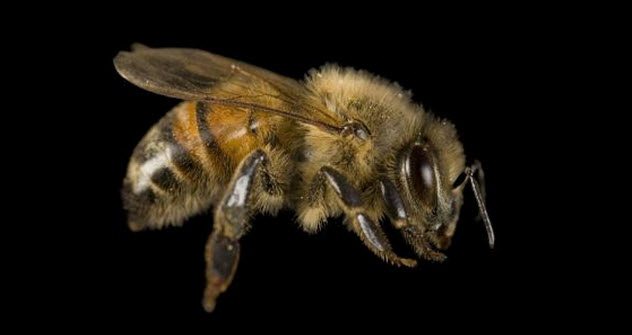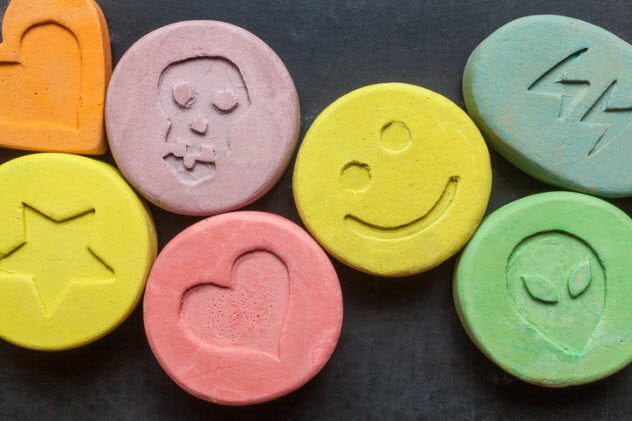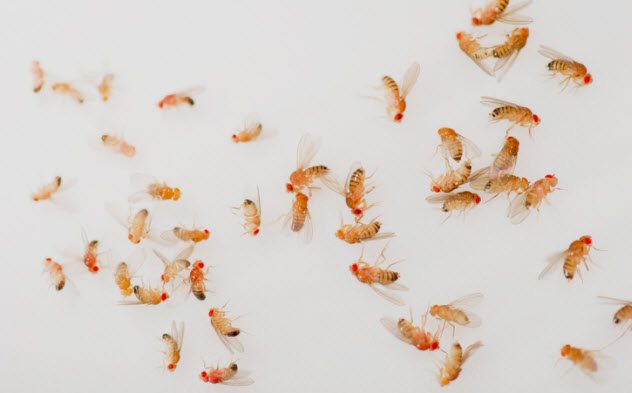 Weird Stuff
Weird Stuff  Weird Stuff
Weird Stuff  Mysteries
Mysteries 10 Tragic Disappearances and Deaths in Joshua Tree National Park
 History
History 10 Ways Childhood Really Sucked in the Old West
 Music
Music 10 Name Origins of Famous Bands from the 1990s
 Religion
Religion 10 Biggest Turnarounds by the Catholic Church
 Weird Stuff
Weird Stuff 10 Unbelievable Times Laws Had Unintended Consequences
 Humans
Humans Ten Historic Women Who Deserve Way More Credit Than They Got
 Movies and TV
Movies and TV 10 Films That Spawned Major Lawsuits
 History
History Ten Times Towns Were Wiped Off the Face of the Earth
 Creepy
Creepy 10 of the Most Disturbingly Haunted Public Houses in the UK
 Weird Stuff
Weird Stuff 10 Niche Subcultures That Are More Popular Than You Might Think
 Mysteries
Mysteries 10 Tragic Disappearances and Deaths in Joshua Tree National Park
 History
History 10 Ways Childhood Really Sucked in the Old West
Who's Behind Listverse?

Jamie Frater
Head Editor
Jamie founded Listverse due to an insatiable desire to share fascinating, obscure, and bizarre facts. He has been a guest speaker on numerous national radio and television stations and is a five time published author.
More About Us Music
Music 10 Name Origins of Famous Bands from the 1990s
 Religion
Religion 10 Biggest Turnarounds by the Catholic Church
 Weird Stuff
Weird Stuff 10 Unbelievable Times Laws Had Unintended Consequences
 Humans
Humans Ten Historic Women Who Deserve Way More Credit Than They Got
 Movies and TV
Movies and TV 10 Films That Spawned Major Lawsuits
 History
History Ten Times Towns Were Wiped Off the Face of the Earth
 Creepy
Creepy 10 of the Most Disturbingly Haunted Public Houses in the UK
10 Times Scientists Got Animals High To See What Would Happen
Every science experiment is valuable. Every time a scientist gets the chance to test an idea in a controlled setting, we learn something more about the world.
SEE ALSO: Top 10 Surreal Animals That Really Exist
Sure, it might be hard to see the value of getting animals high and watching what happens, but these experiments have taught us some deeply valuable things. Thanks to science, we finally know the answers to the questions that have plagued mankind for years.
Like these ones.
10 How Much Cocaine Does It Take To Get A Rat Into Bebop Jazz?

Two neuroscientists discovered something deeply troubling about lab rats. In an experiment, they let the rats pick what music they wanted to listen to. Despite Miles Davis’s “Four” being a seminal part of the bebop canon, the rats would rarely choose to listen to it, even when given the option to enjoy the classic 1956 session featuring John Coltrane on saxophone.
Fortunately, they found a way to correct it. The researchers started force-feeding the rats cocaine and meth before putting them through 90-minute-long bebop jazz appreciation sessions. Although the rats started moving around in what was probably a cocaine freak-out, they couldn’t definitively prove that it wasn’t an attempt at swing dancing.
Then the scientists made the rats give up drugs cold turkey and, once again, let them choose their own music. To the researchers’ delight, the rats exclusively listened to bebop jazz.
The rats started listening to jazz, the researchers said, because it gave them a nostalgic high. Every time they heard the music, they would relive their wild heydays of snorting coke and smoking meth.
That was the real point of the experiment, the researchers explained. They’ve gone out of their way to point out that they didn’t just do it to prove that you can “use coke to teach rats to like jazz.” Which is true. But, just for the record, their experiment definitely did prove that you could use coke to teach rats to like jazz.[1]
9 How Drunk Do Fruit Flies Have To Be To Experiment With Gay Sex?
A Pennsylvania State University professor ran an illuminating experiment. Fruit flies, he’d noticed, were kind of prudish insects that exclusively flirted with the opposite sex and left themselves closed to the strange and forbidden delights that filled the other ends of Kinsey scale. He felt it was his moral duty to find the answer to that age-old question: Just how drunk would a fruit fly have to be before it would get freaky with another guy?
He and his team doused a cotton pad with ethanol and got the fruit flies drunk on the fumes. At first, the results were disappointing. The drunk fruit flies just kept to themselves and failed to provide any of the Gone Wild footage that the researchers had hoped to catch on tape.
Still, the team refused to give up. They kept getting those fruit flies drunk. Soon they discovered that if you get enough fruit flies to go on a three-day bender, you’ll get to watch a full-on, no-holds-barred, gay fruit fly orgy.
There was a point to all of this beyond simple voyeurism, the professor has explained, presumably after being asked what in the world he’d just uploaded to YouTube. The experiment proved that alcohol could loosen inhibitions, which even the study itself admits is already “well-known.”[2]
But, hey. Those researchers have one hell of a story to tell at parties.
8 What Happens If You Taser A Sheep That’s High On Meth?

One recent study explored an interesting question that has sparked the curiosity of the academic community for years: What would happen if you get some sheep really high on meth and start zapping them with a Taser? Like, what if you just really went at them with that thing and just totally messed them up?
As it turns out, the sheep would be unhappy about it.
To run the experiment, the researchers knocked out a group of sheep and injected pure methamphetamines straight into their veins. Then, while measuring the animals’ heartbeats, the researchers zapped the hell out of the poor creatures with Tasers.
The sheep went through hell, but none of them died—which was the real point of the experiment. It proved that Tasers are perfectly safe, according to the people who paid for the study. (We should probably mention that the funding group happened to be Taser International.)[3]
Taser International insisted that they’d proven that their product was perfectly safe and that the more than 1,000 people it has killed since the year 2000 were just wimps who couldn’t handle as much as a methed-out sheep.
It might seem a little cruel, but the experiment served an important purpose: keeping a profitable product on the market.
7 How Would A Cocaine Habit Affect A Bee’s Work Ethic?

After months of work with honeybees, two biologists made a disturbing announcement to the world. “We believe,” they wrote in their study, “that cocaine can have as devastating an effect on honeybee society as it does on human society.”
They had just spent months feeding honeybees cocaine and watching them work, and they were deeply troubled by the results.
It seems that bees tell their hive how much pollen and nectar they’ve found by doing something called “waggle dancing.” These researchers found out that if a bee got really high on cocaine, he would goof off all day and then waggle dance that he’d brought back mountains of pollen for everyone. Bees with a hard coke habit, they discovered, were horrible liars.[4]
It’s important work, but there’s a still a lot to be done. As far as we are aware, no nation has yet signed a pledge to keep cocaine away from young honeybees. And if we don’t act soon, it may be too late.
6 Do Cats Like Dropping LSD?

In the 1970s, Princeton’s Neuroscience Institute ran an important experiment: They gave LSD to a group of cats to see what would happen.
Cats were an unusual choice for the experiment, but Dr. Barry Jacobs, the head researcher, explained the deep scientific reasoning that went into the decision. “Rats would not have been a problem,” he told a reporter, “but I just thought: Evaluating the behavior of a rat? I don’t think so.”[5]
The insights they gained were incredible. Some of the cats bounded about like madmen, while others just stared at nothingness for a long time. Almost all of them would flick their limbs or start grooming themselves and then suddenly stop.
When asked what it all meant, Dr. Jacobs replied, “Who knows? I mean, seriously.”
He had already revealed some incredible secrets about the strange flicking of their limbs. “Maybe—and this is a guess—maybe [it had something to do with] increased sensitivity to their paws,” he suggested. “But again, who knows?”
There’s no telling where this research could have taken us. Tragically, an unexpected development brought the experiments to a crashing halt. Dr. Jacobs recounted the devastating moment that changed everything: “I lost interest in it, and so we just quit on our own.”
5 Should Depressed Dogs Take Prozac?
 Animals suffer from a whole set of psychological problems. There has already been substantial research into canine anxiety and feline post-traumatic stress disorder, but a great number of psychological illnesses are still tragically underdiagnosed. For example, honeybees can experience depression but are rarely treated for it. Even worse, millions of fruit flies suffer through ADHD in silence.
Animals suffer from a whole set of psychological problems. There has already been substantial research into canine anxiety and feline post-traumatic stress disorder, but a great number of psychological illnesses are still tragically underdiagnosed. For example, honeybees can experience depression but are rarely treated for it. Even worse, millions of fruit flies suffer through ADHD in silence.
Fortunately, people today can feed Prozac to their pets. The effects are incredible. In one study, researchers gave Prozac to about 100 dogs and found that their symptoms of anxiety significantly decreased. Across the board, the dogs that were given Prozac showed less destruction behavior and had fewer urination problems. Also, one of them had a seizure, but whatever.[6]
As a result of their experiments, custom-made Prozac for dogs is available today for pet lovers everywhere. But veterinarians took action even before animal antidepressants hit the market. Surveys have found that hundreds of veterinarians have been giving Prozac meant for humans to dogs and cats for years.
4 Can You Ruin A Monkey’s Life With Alcohol?

If you’re like most people, questions about how the macaque monkey population would be harmed if they were provided with an endless supply of liquor plague you nightly. You’ll be glad to know then that a team of researchers has already spent months looking into the question.
They conducted an experiment on what they called “alcohol self-administration by female macaque monkeys,” which is a scientific way of saying that they passed a few drinks to lady monkeys and decided to see where the night took them.
The researchers discovered that monkeys will drink about 0.4 percent of their body mass in hard liquor before calling it a day. And, yes, it will mess them up. The hardest-drinking female monkeys stopped ovulating.
That’s actually an interesting discovery, but they already knew what happened to humans. The researchers wrote that their discovery “parallels the results of clinical studies of alcoholic women,” meaning that this experiment wasn’t meant to teach us anything about human beings. It was purely an experiment on monkeys.[7]
So don’t worry. These researchers made sure that they’d done preliminary tests on humans before risking an experiment on our valuable monkeys.
3 Will Rats on Ecstasy Get Frisky To Loud Music?

A research team at the University of Bari in Italy decided to give rats MDMA, crank out loud techno music, and see if the rats would get it on. This was all part of an experiment that we assume was meant to find out whether researchers could keep themselves entertained while the Internet was down.
They discovered that the rats didn’t get very frisky if all they had was a few hits of Ecstasy. Instead, they became shy and rubbed their paws, presumably contemplating just how incredible it felt to touch their own fur. When the researchers combined blaring loud music with party drugs, though, the rats broke out into a full-on, rat-on-rat orgy.
Admittedly, it’s kind of a weird thing to study. But the report’s even stranger. They didn’t just take notes on whether the rats became frisky—they got details about the animals’ techniques. The researchers kept detailed notes on which animals “reached ejaculation” and even complained about their performance. Even the “sexually experienced male rats,” the researchers wrote, had “notably impaired copulatory behavior.”[8]
2 How Much Cocaine Can A Fruit Fly Freebase?

When they started their experiment, Colleen McClung and Jay Hirsh were well aware just how many researchers had already dumped mountains of cocaine in front of animals. However, they felt that those studies hadn’t gone far enough.
As of yet, they’d only tested what would happen if animals took safe drugs in safe doses. Until McClung and Hirsh came around, no one had yet explored the question of what would happen if insects threw all caution to the wind and just started freebasing cocaine.
The researchers tried different doses and determined that it takes about 200 micrograms of freebased cocaine to kill a fruit fly. If a fruit fly only took 25 micrograms, he would be totally fine and could handle it and wouldn’t need anyone hassling him by saying that he had a problem.
The other fruit flies, who took enough to get high but not enough to die, actually bounced off the walls. Some just started mindlessly spinning around in circles. In extreme cases, they even flipped upside down and started trembling, acting like they’d just been decapitated.[9]
1 Can Dolphins On LSD Speak English?

John C. Lilly tried to teach a dolphin to talk. He believed that if you gave a dolphin LSD, it would be able to speak—an idea based on the popular and long-standing theory that, man, if we gave this stuff to dolphins, they’d probably, like, just start talking or something.
The experiment started off as something slightly more sensible. He hired a woman named Margaret Howe Lovatt to spend every moment living with and talking to a dolphin as part of a simultaneous experiment into both dolphin speech and how much you can get away with making a grad student do.
As it turns out, the answer to the latter question is “a lot.” When the experiment didn’t work, Lilly had Margaret give the dolphin hand jobs—as one does with dolphins—and then decided that the whole thing would go better if everyone was high on LSD.
It didn’t exactly pan out. To everyone’s surprise, no matter how much time they spent beating off a high dolphin, it still wouldn’t speak English.[10]
Lilly blamed the experiment’s failure on funding. He would later complain that he hadn’t had enough time. If he and Margaret had been able to keep it up for a full year, he insisted, it definitely would have worked.
Read more bizarre stories about animals and drugs on 10 Intoxicating Ways Animals Use Drugs and Top 10 Crazy Pharmaceutical Drug Origin Stories.








